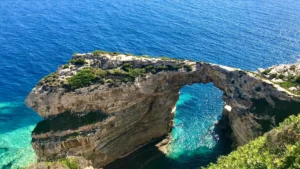Historically, Southeast Asia’s most picturesque communities thrived along the region’s lakes. In modern times, tourism has overtaken traditional livelihoods, as travelers to Southeast Asia check out the charms and countless adventures found along local lakesides.
The Tonle Sap lake in Cambodia’s northwest holds an almost sacramental importance to the nation. Lakeside communities provide a glimpse of traditional Khmer life that has remained almost unchanged for centuries.
The lake is particularly famous for its changing currents – when the water flows from the Mekong into the lake between June to October, the lake swells to cover 10,000 square kilometers; for the rest of the year, the waters flow from the lake into the river, shrinking it down considerably.
For an in-depth look at the communities around the Tonle Sap lake, take a cruise from Siem Reap to visit lake hotspots like Silk Island and Cham tribal villages along the coast. In Battambang province, the Preak Toal bird sanctuary provides a priceless glimpse of the lake’s endemic wildlife between December and March, when thousands of birds come to fish and to breed.
At 450 metres’ depth, Lake Toba in North Sumatra, Indonesia is already one for the record books. But it’s known for breaking an even bigger record: a super-eruption that carved the lake out of a primeval volcano between 69,000 and 77,000 years ago. The Toba super-eruption was estimated to have a Volcanic Explosivity Index (VEI) of 8 – “mega-colossal” is the word used for an eruption of that magnitude. The eruption may have produced a decade-long volcanic winter – and may have decimated the human population to no more than 10,000 individuals!
Lake Toba’s bloody genesis is now the last thing one thinks of when visiting its shores: today, the lake is a relaxing natural sanctuary, the home of the hospitable Batak ethnic group living on Samosir Island in the middle of the lake. Their traditional villages, dotted with stone tombs, allow visitors to glimpse the traditional culture practiced by the Batak for generations.
The Philippines’Taal Lake in the province of Batangas is only 55 km south of the Philippines’ capital Manila, putting its towns directly in the path of the tide of tourists and weekenders taking the short drive from the city. The lake is all that remains of Taal Caldera, a giant volcanic caldera that blew up between 500,000 and 100,000 years ago.
Volcano Island is apparent even to visitors viewing the lake from the town of Tagaytay; hikers on the island will discover a crater lake with its own small island, Vulcan Point: an island in a lake on an island in a lake on an island!
Beyond the island, adventure-minded visitors can take up kiteboarding on the lake’s shores, or cross the lake by boat and hike up the dormant volcano and its own caldera lake and islet. Steer clear, though, when the volcano shows signs of activity!
The Taal Heritage Village offers a nearby cultural detour. Founded by refugees from an 18th-century eruption of the Taal volcano in the midst of the lake, Taal town thrived through its farming and manufacture of fine Barong Tagalog from pineapple cloth (pinya): the latter is still practiced today. Taal’s streets are a blast from the past, populated by grand ancestral homes and Asia’s largest Catholic basilica, the Basilica de San Martin de Tours.
In Laos’ Xaysomboun province, the Ang Nam Ngum Reservoir near Vientiane is a man-made lake: the byproduct of a massive hydropower project that provides electricity to the nation and to nearby Thailand. The lake’s 250 square km of waters are surrounded by forests and a few fine sandy beaches; weekends find the shores brimming with day-tripping locals hanging out on the sand.
Foreign tourists are welcome to join in on the fun: the capacious DanSaVanh Nam Ngum Resort on the lake’s southern reaches provide the lake’s plushes accommodations, including (but not limited to) a casino, an 18-hole, par-72 golf course. For more laid-back local accommodations, try the Longngum View Resort on the lake’s western shores.
The Intha of Myanmar’s Inle Lake have lived along its waters for generations, creating a unique culture that thrives on the rhythms of the lake. Covering about 116 square km of Shan State, Inle Lake is the second-largest lake in Myanmar, rich in both biodiversity and human history.
Nine species of unique fish and a changing complement of migratory birds bring life to the lake’s waters; the lakeside villages housing the local Intha communities use canals as roads, and live off the lake through fishing and farming on floating gardens.
It’s no surprise that the biggest festival on the Inle Lake Calendar takes place right on the lake: the Hpaung Daw U Festival brings several golden Buddha images from their eponymous pagoda in Ywama village to visit the numerous other villages around the lake shores.
Located at the center of Ha Noi Capital (Viet Nam), Hoan Kiem Lake serves as the wet, beating heart of the city. The lake is the backdrop for a legend featuring King Le Loi: a Golden Turtle God reclaimed the king’s magic sword in these waters, after the king had successfully overthrown the Ming Dynasty’s oppressive yoke. The lake’s name – “Lake of the Returned Sword” in Vietnamese – commemorates the event.
Turtles still live in Hoan Kiem Lake, though their actual numbers are unknown. A stuffed specimen can be seen at the Temple of the Jade Mountain (Ngoc Son Temple) on the islet of the lake adjoining the Old Quarter. The iconic The Huc Bridge connects the islet to the lake’s northeastern shore; the temple itself commemorates a 13th-century general who was also renowned for his efforts against foreign invaders.
Mornings around Hoan Kiem Lake see local residents practising tai-chi around the lakeshore, along with couples getting their wedding shots done and tourists walking to the Old Quarter and its shopping opportunities.







